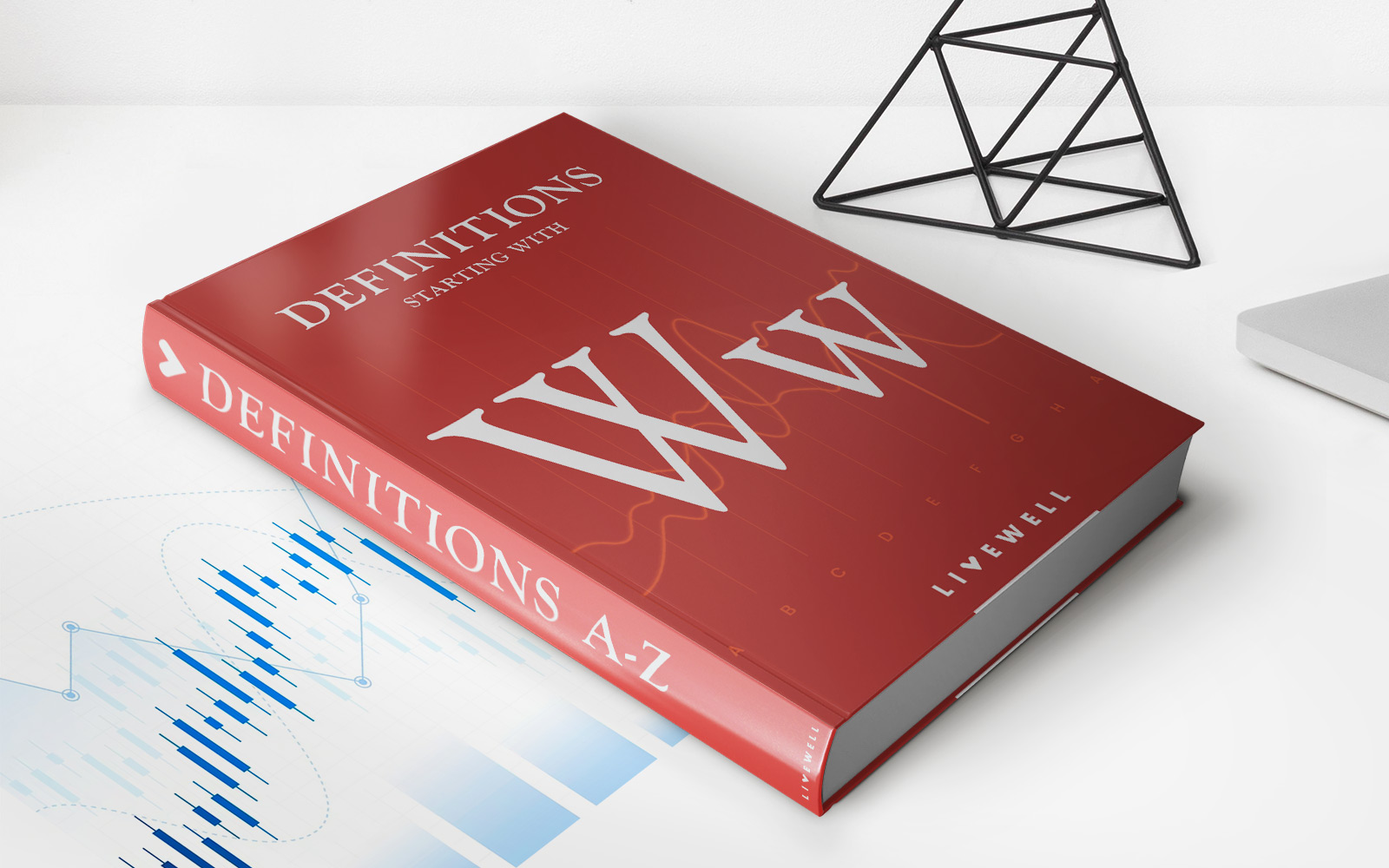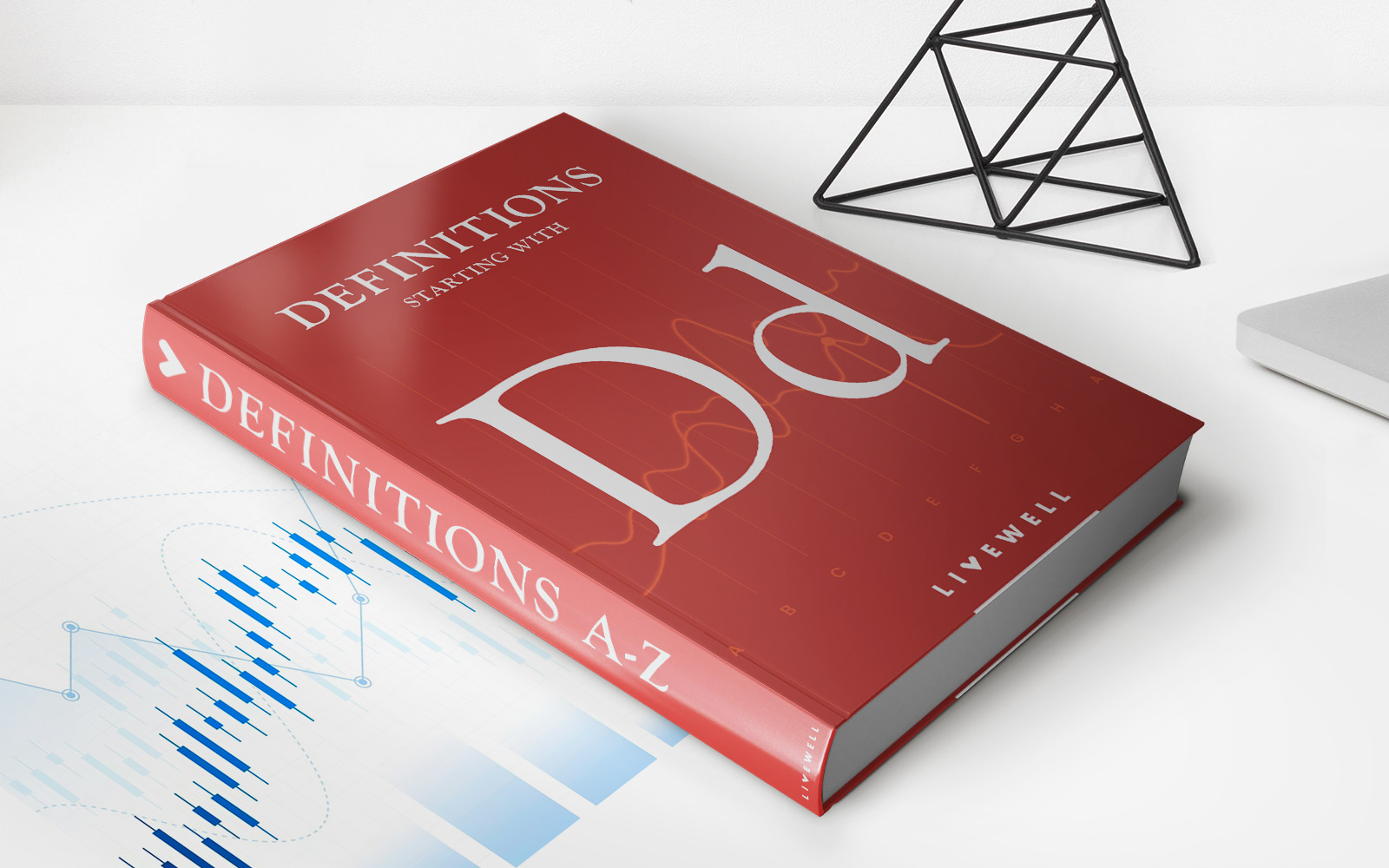Home>Finance>What Is The Waiting Period On A Waiver Of Premium Rider In Life Insurance Policies?


Finance
What Is The Waiting Period On A Waiver Of Premium Rider In Life Insurance Policies?
Modified: February 17, 2024
Learn about the waiting period on a waiver of premium rider in life insurance policies. Understand the financial implications and benefits.
(Many of the links in this article redirect to a specific reviewed product. Your purchase of these products through affiliate links helps to generate commission for LiveWell, at no extra cost. Learn more)
Table of Contents
- Introduction
- Definition of a Waiver of Premium Rider
- Purpose and Benefits of a Waiver of Premium Rider
- Understanding the Waiting Period
- Waiting Period Lengths of Waiver of Premium Riders
- Factors Affecting the Waiting Period
- Importance of the Waiting Period
- Exceptions and Limitations to the Waiting Period
- Conclusion
Introduction
Life insurance is an essential financial tool that provides peace of mind and protection for loved ones in the event of a policyholder’s untimely death. However, life is unpredictable, and circumstances can change suddenly, leaving policyholders unable to pay their premiums. That’s where a Waiver of Premium rider comes into play.
A Waiver of Premium rider is an add-on feature that can be included in a life insurance policy to provide financial relief to the policyholder during times of hardship. This rider ensures that if the policyholder becomes disabled or unable to work due to illness or injury, the insurance company will waive the premium payments for a specified period. In other words, the policy will remain in force, and the policyholder will continue to receive full benefits without having to worry about the financial burden of paying premiums.
The purpose of this article is to explore one key aspect of a Waiver of Premium rider, which is the waiting period. Understanding the waiting period is crucial for policyholders as it determines when the rider will go into effect and provide the much-needed relief. In the following sections, we will delve into the definition of a Waiver of Premium rider, the benefits it offers, and the specific details regarding the waiting period.
Definition of a Waiver of Premium Rider
A Waiver of Premium rider is an additional provision that can be added to a life insurance policy, providing policyholders with a valuable safeguard against financial strain in the event of disability or illness. When the policyholder is unable to work due to a covered disability or illness, the rider allows them to stop making premium payments while keeping the policy active.
In essence, the Waiver of Premium rider acts as a safety net, ensuring that the policyholder’s life insurance coverage remains intact despite their inability to pay premiums. This provision is particularly important in situations where the policyholder relies on their income to meet their financial obligations and support their family.
It is important to note that the specific terms and conditions of a Waiver of Premium rider may vary depending on the insurance provider and the policy itself. Some policies may include the rider automatically, while others may require an additional premium for its inclusion. It is crucial for policyholders to carefully review their policy documents and consult with their insurance agent to fully understand the details and implications of the Waiver of Premium rider.
By having a Waiver of Premium rider in place, policyholders can have peace of mind knowing that their life insurance coverage will continue even if they are unable to make premium payments temporarily. This provision ensures that the policyholder’s loved ones will still receive the financial protection and support they need in the event of the policyholder’s disability or illness.
Purpose and Benefits of a Waiver of Premium Rider
The primary purpose of a Waiver of Premium rider is to provide financial relief to policyholders who are unable to pay their premiums due to disability or illness. By waiving premium payments during the period of incapacity, the rider ensures that the policy remains in force, allowing the policyholder to continue enjoying the benefits of their life insurance policy without interruption.
One of the key benefits of a Waiver of Premium rider is that it protects policyholders and their loved ones from the financial strain that can arise from a sudden loss of income resulting from a disability or illness. In such situations, even a temporary inability to work can have a significant impact on a household’s finances. The waiver of premium payments during this period can provide much-needed financial relief, allowing the policyholder to focus on recovery without the added stress of paying insurance premiums.
Another essential benefit of the Waiver of Premium rider is the preservation of the policy’s cash value and death benefit. When premium payments are waived, the policy continues to accumulate cash value, which can be accessed or borrowed against if needed. Additionally, in the unfortunate event of the policyholder’s death during the disability or illness period, the policy’s death benefit will still be paid out to the beneficiary, ensuring that their financial needs are taken care of.
Furthermore, a Waiver of Premium rider can provide added flexibility and peace of mind for policyholders. By having this provision in place, policyholders can feel secure knowing that their life insurance coverage will remain in force, regardless of their ability to pay premiums during a period of disability or illness. This security is especially valuable in situations where the policyholder has dependents who rely on the policy’s benefits for their financial well-being.
It is important to note that the benefits and provisions of a Waiver of Premium rider may vary depending on the policy and insurance provider. Policyholders should carefully review the terms and conditions of their specific rider and consult with their insurance agent to fully understand the extent of coverage and any limitations or exclusions that may apply.
Understanding the Waiting Period
When it comes to a Waiver of Premium rider, one important aspect to understand is the waiting period. The waiting period, also known as the elimination period, refers to the length of time that must pass before the rider goes into effect and premium payments are waived. It acts as a form of protection for insurance companies, ensuring that the policyholder’s disability or illness is not a short-term or temporary condition.
The waiting period typically begins from the first day of disability or illness and continues for a predetermined duration, which can range from a few months to several years. During this waiting period, the policyholder is still responsible for making premium payments as usual. However, once the waiting period has elapsed, the insurance company will start waiving the premiums, allowing the policyholder to focus on their recovery without the burden of premium payments.
It’s essential to note that the length of the waiting period can vary depending on the policy and insurance provider. Some policies may offer shorter waiting periods, while others may have longer waiting periods with corresponding benefits and premiums. Policyholders should carefully review their policy documents to determine the specific waiting period applicable to their Waiver of Premium rider.
Understanding the waiting period is crucial for policyholders as it sets expectations for when the rider will become effective. It’s essential to be aware of the waiting period’s duration and plan accordingly in case of disability or illness. Policyholders should take into account their financial situation and explore other means of income or financial protection during the waiting period, such as savings, disability insurance, or other resources.
Additionally, it’s important to note that the waiting period is typically consecutive. This means that any breaks or interruptions in the period of disability or illness may reset the waiting period, requiring the policyholder to wait again before the rider goes into effect. Policyholders should be mindful of this provision and consult with their insurance agent to fully understand the waiting period’s implications and how it may impact their coverage.
The waiting period is a critical aspect to consider when evaluating a life insurance policy with a Waiver of Premium rider. It is necessary to comprehend the duration of the waiting period and plan accordingly to ensure the financial well-being and stability during a period of disability or illness.
Waiting Period Lengths of Waiver of Premium Riders
The waiting period for a Waiver of Premium rider can vary depending on the life insurance policy and the insurance provider. Generally, waiting periods can range from 30 days to two years, with some policies offering shorter or longer waiting periods. It is crucial for policyholders to carefully review their policy documents and consult with their insurance agent to understand the specific details of the waiting period for their Waiver of Premium rider.
A shorter waiting period, such as 30 or 60 days, may be suitable for policyholders who have a financial safety net in place, such as savings or short-term disability insurance, to cover their expenses during the waiting period. This option allows for quicker relief from premium payments once the disability or illness is established.
On the other hand, a longer waiting period, such as one or two years, may be associated with policies that offer lower premiums or greater coverage benefits. This can be an attractive option for policyholders who have a more stable financial situation and can sustain premium payments during the waiting period.
It is important for policyholders to assess their individual circumstances, including their financial resources and likelihood of needing to rely on the rider, when considering the length of the waiting period. Factors such as the policyholder’s age, occupation, health condition, and family responsibilities should also be taken into account.
Some insurance providers may offer the option to select the waiting period length that best suits the policyholder’s needs. It is advisable for policyholders to carefully evaluate their financial situation, the potential impact of a disability or illness, and their ability to cover premiums during the waiting period before making a decision.
Policyholders should also consider the conditions under which the waiting period will be satisfied. Most insurance policies require the policyholder to be continuously disabled or ill for the entire waiting period. Any breaks or interruptions in the disability or illness could reset the waiting period, resulting in a further delay before premium payments are waived.
Understanding the waiting period lengths and their implications is crucial when selecting a life insurance policy with a Waiver of Premium rider. By carefully considering their financial situation and needs, policyholders can choose a waiting period that provides the right balance between cost, coverage, and financial stability.
Factors Affecting the Waiting Period
Several factors can influence the waiting period length for a Waiver of Premium rider in a life insurance policy. These factors may vary depending on the insurance provider and the specific policy. It’s important for policyholders to be aware of these factors, as they can impact when the rider will go into effect and provide relief from premium payments.
One significant factor is the policyholder’s age at the time of policy issuance. Younger policyholders generally have shorter waiting periods compared to older policyholders. This is because younger individuals are generally considered to be at a lower risk of disability or illness, and insurance providers can have greater confidence in their long-term health and ability to continue making premium payments.
The policyholder’s occupation can also impact the waiting period length. Certain occupations may be considered more high-risk, and insurance providers may require longer waiting periods to ensure that any disabilities or illnesses related to the occupation are not short-term or temporary in nature.
Underlying health conditions of the policyholder can also play a role in determining the waiting period. If the policyholder has pre-existing medical conditions or a history of health issues, insurance providers may require a longer waiting period to determine the stability of the policyholder’s health and the likelihood of a disability or illness occurring.
Additionally, the waiting period can be influenced by the level of coverage selected by the policyholder. Policies with higher coverage amounts may entail longer waiting periods as insurance providers assess the potential financial risk and require a more extended period of validation before waiving premium payments.
The insurance provider’s underwriting guidelines and policies also factor into the waiting period determination. Each insurance company sets its own standards and criteria for determining waiting period lengths, taking into account factors such as their risk tolerance, market competitiveness, and past claims experience.
Lastly, it’s important to recognize that policyholders can have some control over the waiting period by selecting the appropriate policy options. Some insurance providers may offer flexibility in choosing the waiting period length based on the policyholder’s needs, preferences, and budget. By carefully reviewing the policy terms and discussing options with their insurance agent, policyholders can make informed decisions about the waiting period that align with their financial circumstances.
Overall, understanding the factors that influence the waiting period length is essential for policyholders who are considering a life insurance policy with a Waiver of Premium rider. By being aware of these factors and their implications, policyholders can make informed decisions that align with their individual needs and ensure the right balance between coverage and financial protection.
Importance of the Waiting Period
The waiting period of a Waiver of Premium rider in a life insurance policy holds significant importance for policyholders. It serves as a crucial period that helps insurance providers assess the legitimacy and duration of a policyholder’s disability or illness before waiving premium payments. Understanding the importance of the waiting period is essential for policyholders when considering the inclusion of a Waiver of Premium rider in their life insurance coverage.
One of the primary reasons the waiting period is essential is to protect insurance providers from fraud or abuse. It ensures that policyholders are not taking advantage of the rider by seeking temporary relief from premium payments for conditions that may not be long-term or disabling. The waiting period acts as a validation period to establish the seriousness and duration of the disability or illness.
Moreover, the waiting period is crucial for policyholders to plan their finances accordingly. It sets the expectation for the period in which they will need to continue making premium payments before the rider goes into effect. Policyholders can use this time to explore other financial resources, such as savings or short-term disability insurance, to cover their expenses during the waiting period.
During the waiting period, policyholders should also consider their ability to access other forms of assistance, such as employer-provided disability benefits or government programs. These resources can help bridge the financial gap while waiting for the Waiver of Premium rider to become effective.
Furthermore, the waiting period allows insurance providers to ensure that policyholders have a genuine need for the rider. It helps prevent individuals from obtaining coverage solely for the purpose of taking advantage of premium waivers, which could lead to higher costs for all policyholders. By establishing a waiting period, insurance providers can better assess risk and maintain the affordability and sustainability of the overall policy coverage.
Policyholders should be aware that the waiting period typically needs to be satisfied continuously. Any breaks or interruptions in the disability or illness could reset the waiting period, further delaying the benefits of the rider. Therefore, it is crucial for policyholders to carefully manage their condition and adhere to treatment plans recommended by healthcare professionals to ensure a smooth transition into the waiver of premium payments.
In summary, the waiting period of a Waiver of Premium rider holds great importance for policyholders. It plays a vital role in validating the severity and duration of a policyholder’s disability or illness, protecting insurance providers from abuse, and allowing policyholders to plan their financial responsibilities accordingly. Understanding and respecting the waiting period allows for a fair and efficient implementation of the Waiver of Premium rider, ensuring the sustained financial protection and security that life insurance coverage provides.
Exceptions and Limitations to the Waiting Period
While the waiting period of a Waiver of Premium rider is an important aspect of life insurance policies, it is essential for policyholders to understand the exceptions and limitations that may apply. These exceptions and limitations can impact when the rider goes into effect and the circumstances under which premium payments will be waived.
One common exception to the waiting period is for accidents. In some cases, if a policyholder becomes disabled due to an accident, the waiting period may be waived, and the rider can become effective immediately. This exception recognizes the unforeseen nature of accidents and the immediate impact they can have on a policyholder’s ability to work and pay premiums.
However, policyholders should carefully review their policy documents to confirm if this exception applies and what specific criteria must be met to qualify for immediate coverage in the event of an accident.
Additionally, it is crucial to be aware of any pre-existing condition limitations that may be in place. Insurance providers may have specific guidelines regarding pre-existing conditions, which can affect the waiting period for the Waiver of Premium rider.
For instance, if a policyholder has a pre-existing condition at the time of applying for the life insurance policy, the waiting period for the rider may be extended, or the rider may be excluded altogether for that particular condition. Policyholders should carefully review their policy documents and consult with their insurance agent to understand any limitations related to pre-existing conditions and how they may impact the waiting period.
It’s also important to note that certain disabilities or illnesses may not be covered by the Waiver of Premium rider. Some common exclusions include self-inflicted injuries, intentionally causing harm, or disabilities resulting from illegal activities. Policyholders should familiarize themselves with the specific exclusions outlined in their policy documents to understand the limitations of the rider.
Furthermore, the waiting period may not apply uniformly to all types of disabilities. Some policies may have different waiting periods for disabilities resulting from sickness as opposed to those resulting from injuries. Policyholders should review their policy documents to understand any specific waiting period distinctions based on the cause of disability.
It is also important to recognize that the waiting period for the Waiver of Premium rider may have implications on other policy provisions, such as the policy’s cash value accumulation or the duration of coverage. Policyholders should consult with their insurance agent to fully understand these implications.
Understanding the exceptions and limitations to the waiting period is crucial for policyholders considering a life insurance policy with a Waiver of Premium rider. By knowing the specific circumstances that may impact the waiting period, policyholders can have realistic expectations and make informed decisions about their coverage and financial protection.
Conclusion
A Waiver of Premium rider in a life insurance policy can provide invaluable financial relief to policyholders who experience disability or illness. Understanding the waiting period associated with this rider is key to comprehending when premium payments will be waived and the level of protection it offers.
Throughout this article, we have explored the definition of a Waiver of Premium rider and its purpose in maintaining the policy despite the policyholder’s inability to pay premiums. We have also discussed the waiting period, noting its duration, factors affecting it, and its importance in validating the disability or illness.
The waiting period can vary depending on several factors, such as age, occupation, health condition, and policy coverage. Competent evaluation of these factors will help policyholders choose an appropriate waiting period that aligns with their financial circumstances and needs.
While the waiting period acts as a safeguard for insurance providers, policyholders must also be aware of exceptions and limitations. Understanding any criteria that might exempt policyholders from the waiting period, such as accidents, or any pre-existing condition limitations is crucial in ensuring appropriate coverage.
In conclusion, when considering a life insurance policy with a Waiver of Premium rider, policyholders should not overlook the waiting period. By understanding this period and its impact on premium payments, policyholders can make informed decisions, plan for financial stability during the waiting period, and ensure the sustained protection for themselves and their loved ones in times of disability or illness.














